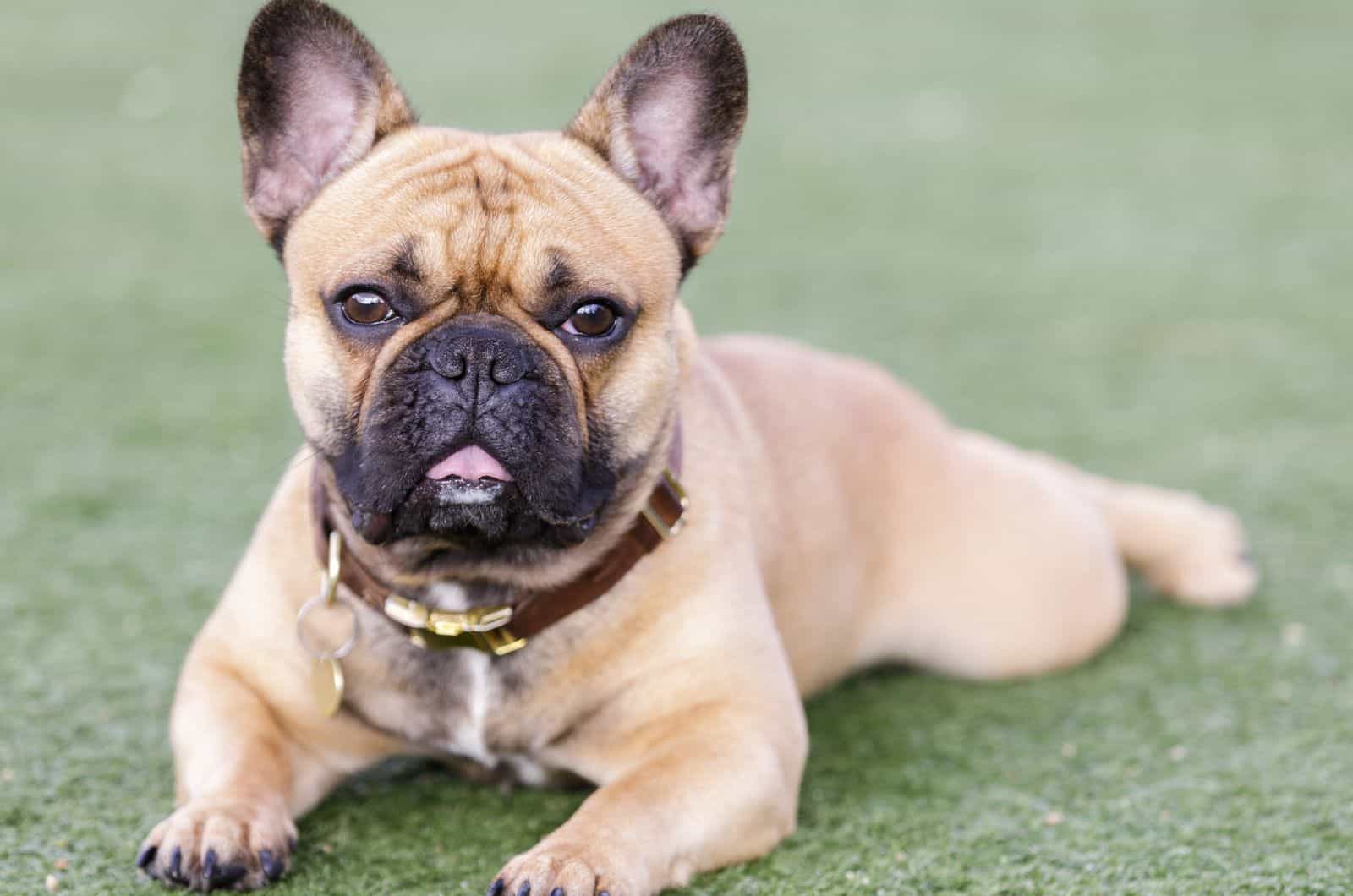French Bulldogs are one of the most popular dog breeds in the States, and fawn French Bulldogs are probably the prettiest of them all.
The French Bulldog dog breed is blessed to come in numerous coat colors. They’re all super pretty, but not all of them are approved by official kennel clubs.
So, what’s the deal with the fawn Frenchie? Are they official and recognized? Or, are they rare and better to be avoided?
Today, you will learn all there is to know about the fawn Frenchie. By the end of this article, you’ll realize if it is better to own one or not.
So, let’s dig in the wonderful world of Frenchie colors, and put the lovely fawn Frenchie under the radar!
What Is The Fawn French Bulldog?
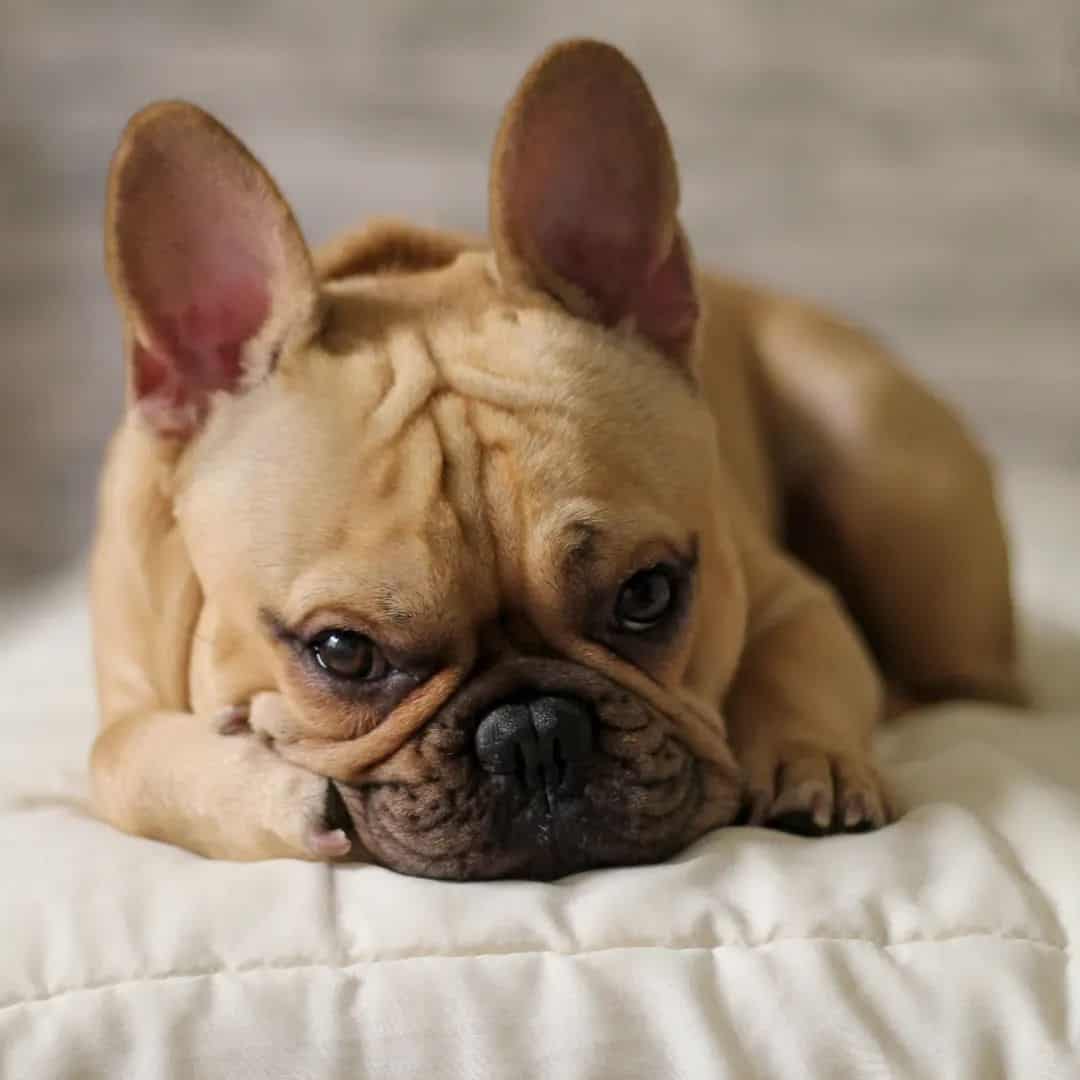
The fawn French Bulldog is simply one of the coat colors found with this dog breed. French Bulldogs are one of those dogs with a wide array of coat colors. However, the official American Kennel Club (AKC) recognizes only 8 of them.
Fawn French Bulldogs are recognized as well as fawn pied dogs. Still, other fawns, like blue fawns, are not welcome in the official club. The AKC may recognize them, but if you want to enter a blue fawn puppy into a competition, you’d be disqualified because that coat color is a fault.
So, what does the fawn coat color look like?
The fawn coat is either a shade of tan or beige, or it can present in any of the shades from light tan to golden tan or red tan.
We can all agree that fawn French Bulldogs are simply beautiful dogs with an impressive appearance that will make you want one asap.
Different Types Of Fawn Frenchies
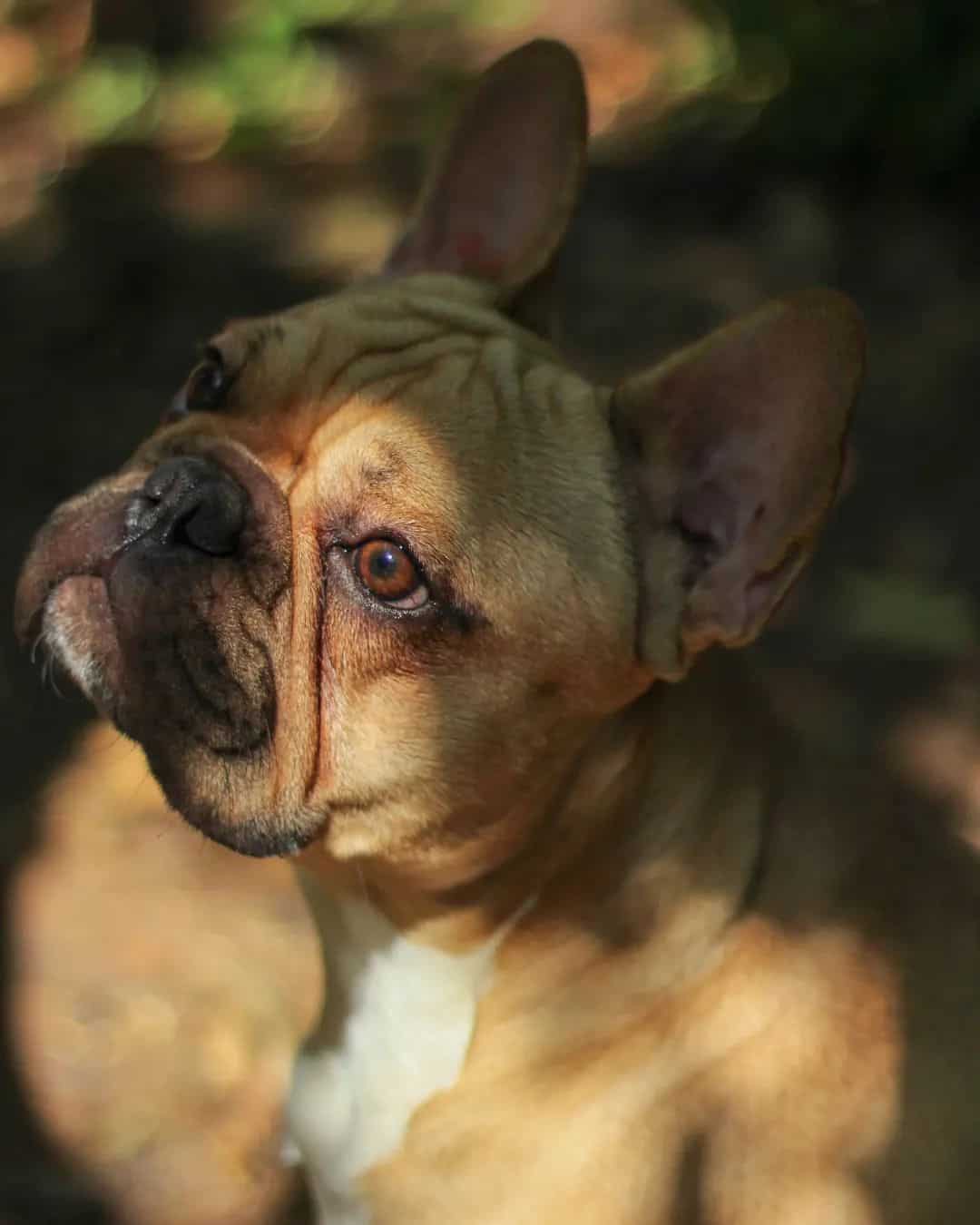
Once you get familiar with fawn French Bulldogs, you’ll realize that they come in so many wonderful shades. Fawn is truly a stunning coat color, and the different shades only make them more special. There are no two identical fawn French Bulldogs in the world. Each fawn Frenchie is special in its own way.
The following fawn coats are the most popular options for a Fawn French Bulldog:
chocolate fawn
red fawn French Bulldog
solid fawn coat
Lilac Fawn French Bulldog
Silver fawn Frenchie
Fawn Pied French Bulldog
Fawn Merle French Bulldog
Fawn White French Bulldog
As you can see, the options range from the simplest ones, like the red fawn Frenchie (a lovely reddish tan shade), to more complex ones, like those with blue and silver coat hues. For example, blue or chocolate genes are rarer than any other gene found in Frenchies.
Fawn French Bulldogs will exhibit different eye colors, too. Their eyes will have a lighter shade, matching their coat.
A Word About The French Bulldog
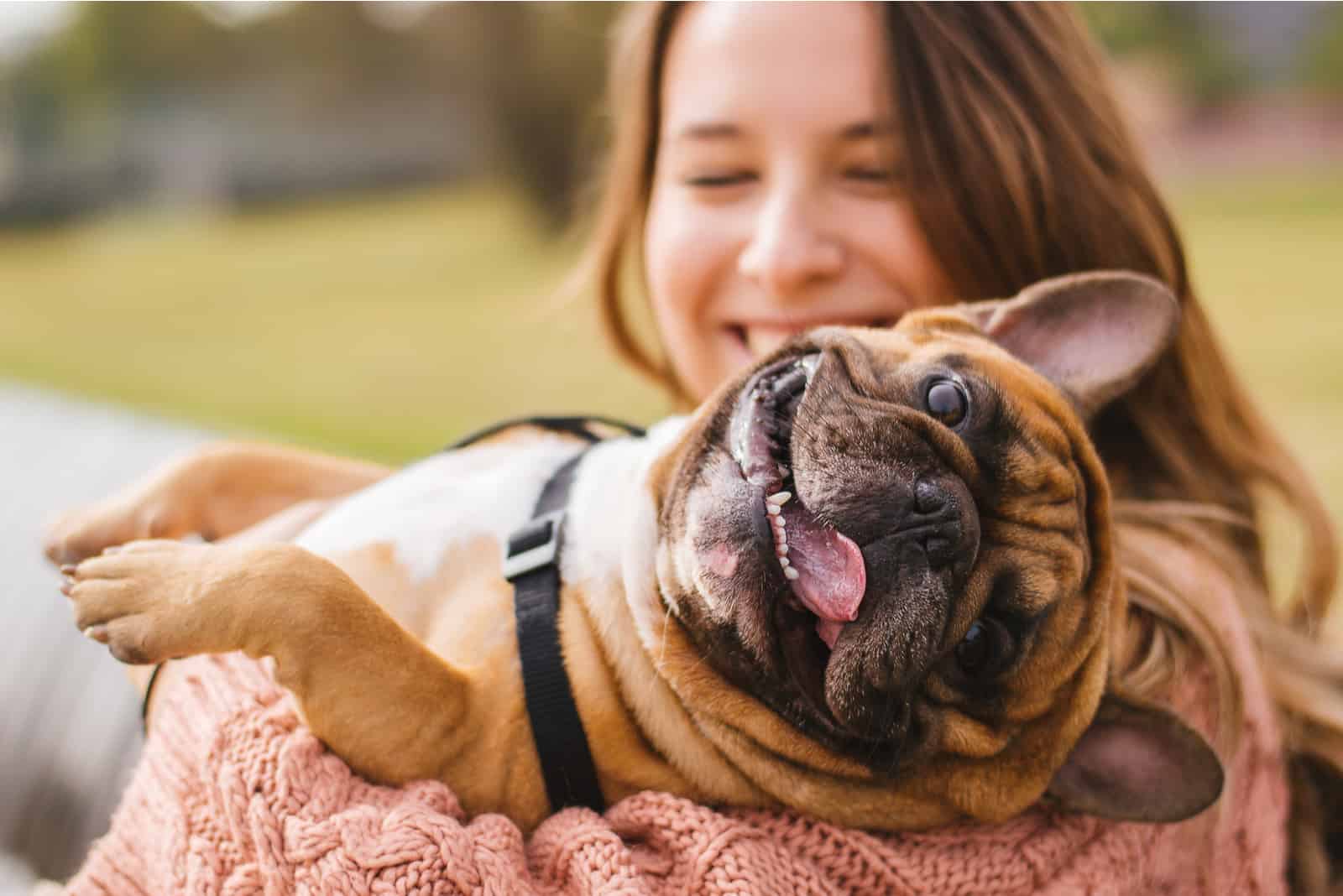
Before we go in depth about the fawn color and how it affects the Frenchie of your dreams, you should know a thing or two about French Bulldogs, where they come from, and what they’re like.
Fortunately, the French Bulldog breed is one of the most popular breeds in the world, so we’re safe to say there’s plenty of information on these dogs.
Frenchies are loyal companions and super keen on making people laugh and feel better. Often called clown dogs, Frenchies have a rich history that dates back centuries in the past.
Did you know that the French Bulldog is a descendant of the ancient Molossians? This dog breed is traced back to ancient Greece, but with the expansion of the Phoenician trade, the breed was brought to the rest of the world.
Then, British Molossians were bred with English Mastiffs to get a new breed – the Bullenbeisser. These were the first modern specimens of the Bulldog breed. The first Bulldogs were used for a cruel, bloodsport called bull baiting.
Fortunately, the tables turned, and the Bulldog began his career as a companion dog somewhere in the 1800s. Breeding with terriers and other smaller dogs has resulted in a toy version of the Bulldog – another popular companion dog.
The Industrial Revolution brought many changes into the canine world, too. When the workers migrated from England to France, they brought along the toy Bulldog. This breed was bred and polished to perfection, so they got a whole new Bulldog called Bouledogue Francais.
The Bouledogue Francais is our French Bulldog – a fine lap dog adored by many artists, writers, and the privileged part of the society.
Today’s Frenchies are beloved family dogs, and we’re truly grateful to have them as pets.
The Appearance Of A Fawn Frenchie
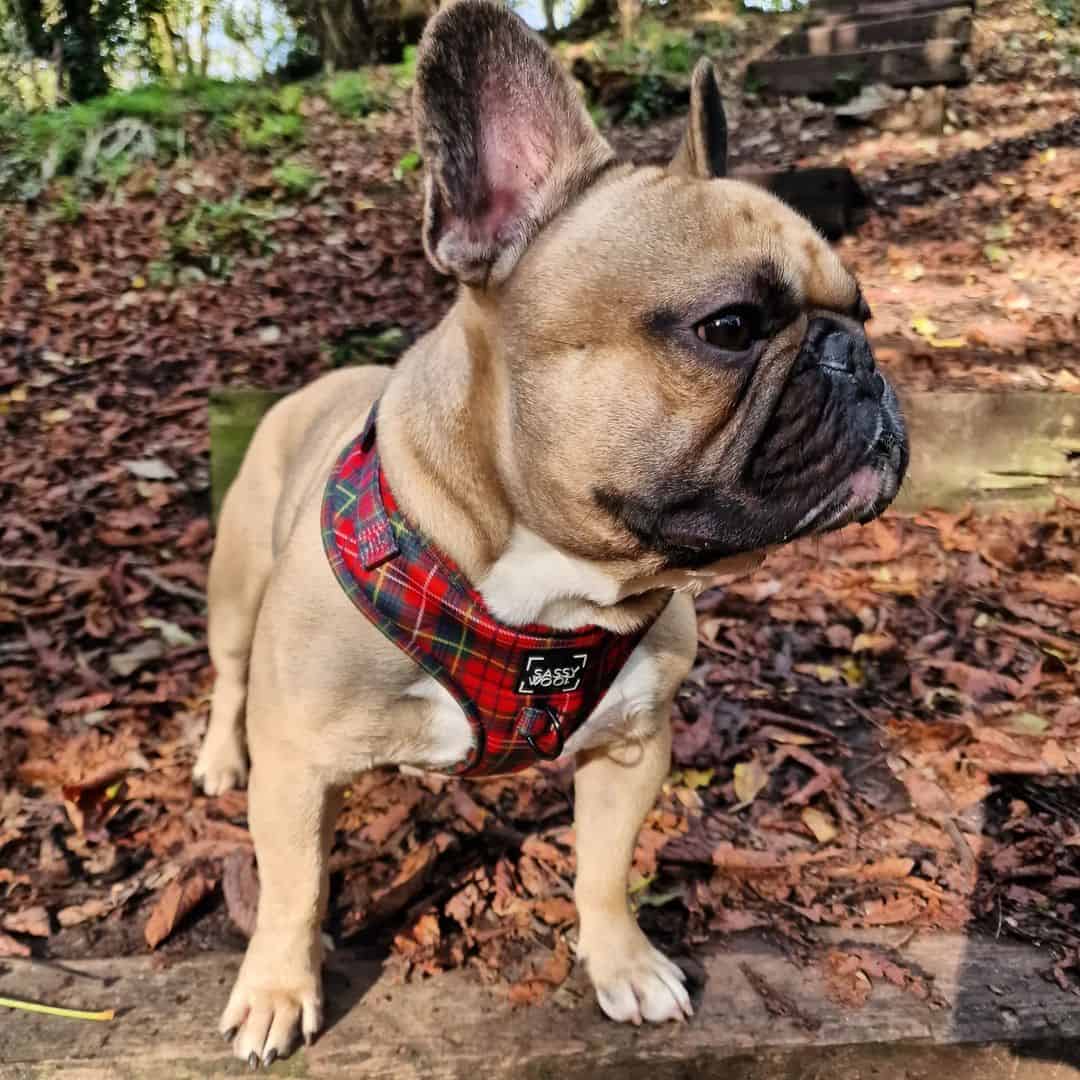
A fawn French Bulldog looks exactly like all the other Frenchies, with the exception of the coat color.
We will get to their coat type soon. But now, I want to address the general appearance and features of fawn Frenchies.
Frenchies are small dogs. They’re the perfect lap pooches ready for cuddling. An average Frenchie doesn’t weigh more than 28 pounds, and they’re about 11 to 13 inches tall.
Frenchies are sleek-coated dogs. They have short hair covering all of their body, and a small, straight or corkscrew tail. It’s almost non-existent.
Frenchies are one of those dogs with a smushy face, meaning they’re brachycephalic, and they will experience problems with breathing as well as snoring and snorting.
Frenchies are recognizable for their big ears. They’re upright, and they make these pups look even more like clowns.
Average Frenchies are often muscular dogs. Thanks to their high energy levels, they tend to stay fit. In fact, letting a Frenchie put on additional weight isn’t something that should happen. They’re built to stay small, fit, and agile all the time.
About The French Bulldog Coat Type
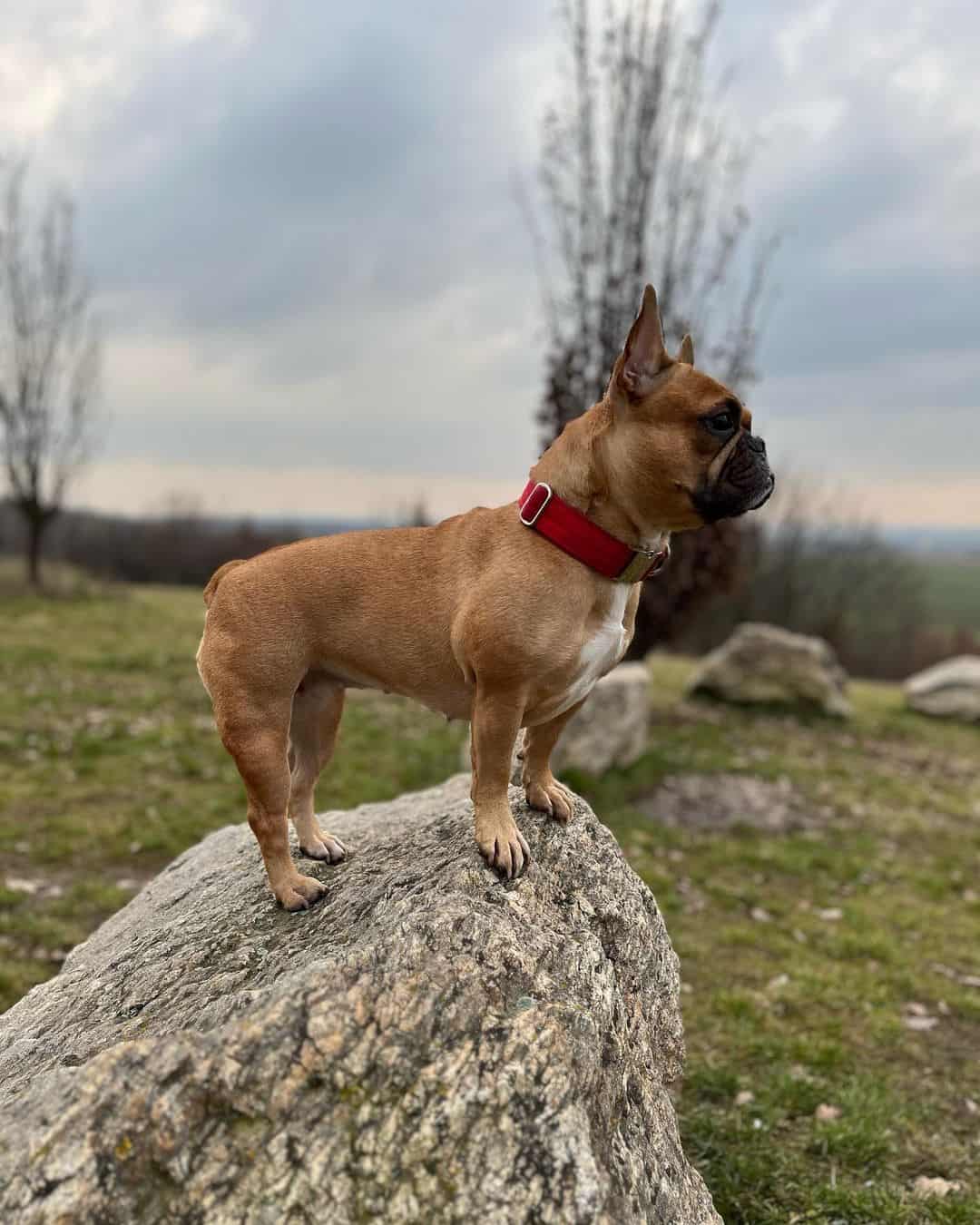
Have you ever heard of the fluffy Frenchie?
Most likely, not. But, sleek-coated Frenchies aren’t the only ones out there. These dogs can also come in fluffy versions.
A Frenchie’s coat is more interesting than you think. Unfortunately, this doesn’t mean they’re interesting for people who are allergic to dog hair. French Bulldogs aren’t hypoallergenic. They shed like crazy, and you should keep that in mind if you show signs of allergic reactions around dogs.
Frenchies tend to shed twice a year, but they still disperse loose hairs all year round. The shedding season usually lasts during spring and summer months.
While fluffy Frenchies are extremely rare, their straight-haired brothers and sisters aren’t. Standard Frenchies come in single-coat varieties. Not many of them come with a double coat.
Grooming a Frenchie is more important than you think, especially maintaining his hygiene on a satisfying level. We’ll get to the grooming part soon.
Which French Bulldog Colors Are Common?
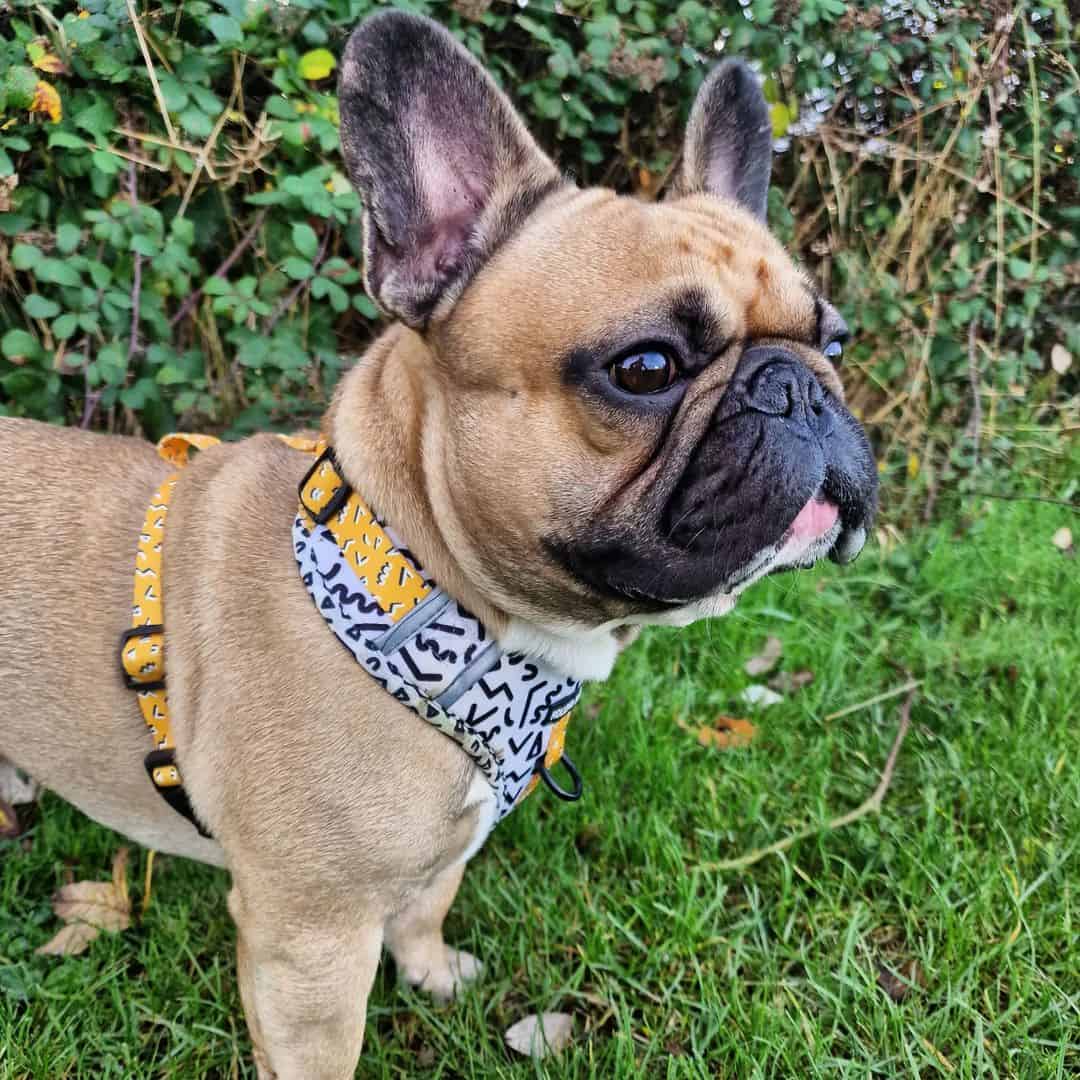
The American Kennel Club has a breed standard for French Bulldogs because they’re purebred dogs. The breed standard is there to tell which Frenchie colors are desirable and allowed, and which are considered a serious fault.
The AKC allows 9 Frenchie colors:
fawn
fawn and white
fawn, brindle, and white
fawn and white
brindle
brindle and white
cream
white
white and brindle
As for the markings, the following ones are welcome:
black mask
black markings
white markings
piebald
brindle markings
According to the AKC, the following coat colors and markings are a big no:
black and tan
mouse
chocolate
black and white
solid black
blue
merle
liver
sable
If you agree, we can say a word or two about each Frenchie color besides fawn.
Brindle Frenchie
Brindling is a popular coat pattern that shows up with many dog breeds, including our Frenchie buddy.
Simply put… the brindle pattern is a sort of striping, which makes the dog look like a tiger. The stripes can either be heavy and noticeable or just some light stripes.
Brindle Frenchies usually have a darker base coat and brindle streaking throughout it.
There’s no way you can tell whether a puppy will be a brindle one before they turn 6 weeks of age. This is the time when their adult coat starts to come out. Once completely solid, Frenchie puppies will get their brindle markings and the breeder will be able to list them as brindles.
Brindle Frenchies can come as seal brindle dogs, with a coat almost completely solid, and also blue brindle. The blue brindle coat is one of the rarest because it’s a result of recessive genes from both parents. The diluted blue pigment makes the coat appear washed out… almost gray.
Brindle Frenchies are the clear work of art of recessive genes; hence, their light-colored eyes, i.e., blue eyes.
This coat color can also come as a combination with white, such as white & brindle, or brindle & white, depending on the color ratio.
Cream Frenchie
Cream Frenchies are also quite popular and stunningly beautiful. Besides pure white dogs, they’re one of the lightest Frenchie shades. These dogs have a somewhat off-white shade with a yellowish, orangish tint.
Some dog experts say that cream Frenchies have an eggshell color, and they’re not wrong at all! Cream Frenchies are a result of dilute genes. In other words, these pups are a dilute from light fawn dogs.
Unlike their brindle Frenchie buddies, cream Frenchies have no markings. They have a black nose, paws, eye rims, and lips, which is proof they possess black pigment.
Solid Black
No matter how breathtaking solid black Frenchies are, their coat color is not accepted by the AKC, nor will it ever be.
The solid black coat is an obvious sign that the puppy carries black pigment. This coat type occurs when both parents have the black pigment, or a locus.
If you see a solid black Frenchie in person, consider yourself lucky. These dogs are super rare, and they cost a little fortune to own.
Sable French Bulldog
Sable Frenchies are another lovely coat color option, but they’re not accepted by the AKC.
If you have never seen a sable coat before, this is a fawn base coat with black tipping on the hair. And, it’s all over the dog’s body.
Sable is a pretty lovely coat color, and Frenchies fashioning it are truly unique. It looks like all the tips of their hair are washed out.
Sable is already a rare coat, but wait until you see the blue sable Frenchie. Their hair tips aren’t black; they’re blue-tipped. Also, they carry a blue mask.
It’s super difficult to find a blue sable Frenchie.
Black And Tan
Black and tan Frenchie are super rare, despite the fact that this is a common coat color combination with lots of other dog breeds.
A black and tan Frenchie fashions a solid black coat without any streaks or colored tips. The tan points are usually above his eyes, on his cheeks, and on his lower legs.
The unusual appearance makes these Frenchies really sought-after. But, their availability and high price is definitely a problem.
Merle
The merle coat is definitely one of the most stunning coats in the canine kingdom. Also, it’s one of the least desirable ones. The merle coat can be a sign of poor breeding, and sometimes even genetic problems.
There’s a huge chance your merle Frenchie is actually a double merle or a cryptic merle (hidden double merle). This increases the chance of the pup being extremely ill.
The merle coat is what you get when the dominant gene gets diluted by other genes. The base color is covered with irregular splashes and stripes. To be honest… it’s wonderful, but is the beauty worth taking a risk of having a severely ill puppy.
Blue And Tan
Blue and tan French Bulldogs look like black and tan Frenchies. The tan points on the eyebrows, cheeks, and lower legs are still present, but the black portion of the coat isn’t black anymore.
The blue coat is actually a dilution of black. The coat looks a bit washed out and pale, with a tint of blue visible under different lighting.
This coat color is still very much wanted, despite not being recognized by the AKC.
How To Take Care Of Your Fawn French Bulldog
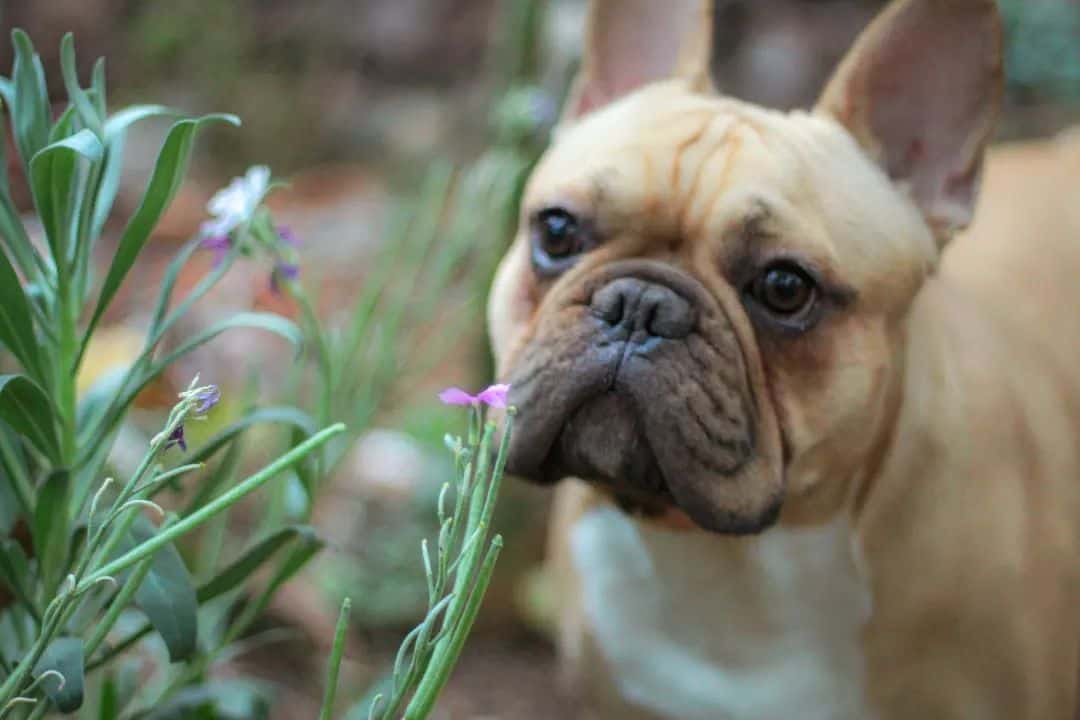
Regularly grooming a Frenchie is one of the most important things you can do for your dog. It’s not only about keeping the coat mess-free. It’s also about teaching your dog proper hygiene habits and implementing them.
A well-groomed dog is a healthy dog. And, in order to have your Frenchie feeling well and looking great, you’ll need to devote some time to grooming his coat.
The good news for all Frenchie owners is that these dogs aren’t too high maintenance for grooming. You should be able to do well with a bristle brush that will solve any matts and give the coat the necessary shine.
Fawn Frenchies have a light coat, and it’s pretty noticeable when they get dirty. However, this doesn’t mean you should wash them every time this happens. For starters, your dog can’t handle excessive bathing. Second of all, it’s too tiring and time-consuming.
Instead, use dog wipes for his paws and dirty areas. Wash them every two to three months to prevent the skin from drying out.
Frenchies are much like Pugs. They share a similar coat, and they’re the same in a lot of things. So, if you take a look at the most common Pug skin problems, you’ll know what to expect with Frenchies.
Does The Fawn Coat Color Affect The Frenchie’s Health Status?
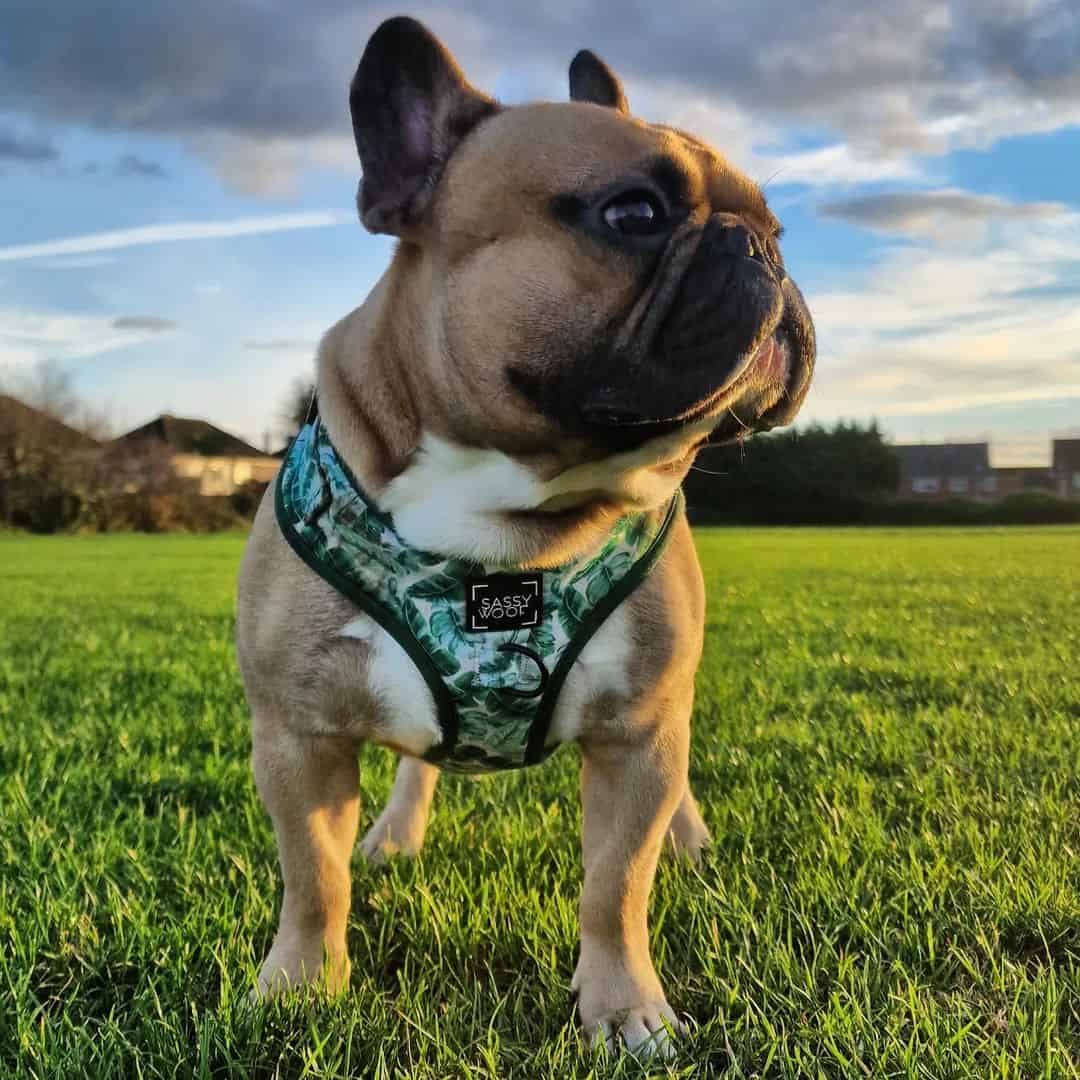
Generally speaking, French Bulldogs are healthy dogs with a tendency to live a long and happy life. Many factors can contribute to their long lifespan. But, also… many factors can make their life significantly shorter.
The coat color isn’t usually linked to the dog’s health status, but in some cases, it is. For example, the white coat can be a sign of albinism – a severe condition that affects the dog’s life quality.
But, what about the fawn coat? Do the recessive genes have a role here? Will fawn French Bulldogs be healthier or sicker compared to other coat colors?
Unfortunately, there is some evidence that fawn French Bulldogs are more prone to some health issues than others.
The most common health problems that might strike your Frenchie are:
Intervertebral disc disease (IVDD)
Hip Dysplasia
Hip dysplasia is pretty common with dogs of all ages and sizes, and it does affect our Frenchie buddy.
Hip dysplasia occurs when the femur bone does not fit the socket of the hip joint.
This condition is genetic. In most cases, it affects senior dogs, but dogs that are ages three and up can also suffer from hip dysplasia.
Alopecia
Alopecia is a condition that causes bald spots and extreme hair loss. This condition is also known as blue dog coloration. Given the fact that fawn can come with a tint of blue, known as blue fawn, we can say that alopecia affects blue fawn dogs the most.
However, alopecia can strike pretty much any dog with genetic predispositions to it.
When it comes to French Bulldogs, all of their skin, coat, and general health conditions can be linked to the pigment, melanin, and its insufficiency.
Intervertebral Disc Disease (IVDD)
French Bulldogs are quite prone to spinal conditions. One of them is intervertebral disc disease (IVDD). This is a health issue that generally affects all Frenchies.
IVDD occurs when one of the discs in the spinal cord ruptures. The disc puts pressure on the spine, and moves into it.
IVDD occurs mostly with senior dogs, but dogs that suffer from stress or have experienced any trauma can get IVDD, too. This is a severe condition that can cause lameness, pain, and even paralysis.
Patellar Luxation
Many toy dog breeds, including our Frenchie, suffer from size-related issues. One of them is patellar luxation.
As the name suggests, patellar luxation occurs when the kneecap, thigh bone, and calf aren’t properly fixed together. The patella (or kneecap) keeps on slipping.
Dogs with patellar luxation can easily be recognized because they have an odd walk.
This condition is usually inherited from the parents. If you want your dog to be relieved from patellar luxation, he’ll need surgery.
Hemivertebrae
This condition stands for the malformation of one or more vertebrae. It causes pressure on the spinal cord.
Hemivertebrae causes crippling pain and even paralysis. Unfortunately, this condition isn’t treatable, and your dog will have to live with it.
Canine Follicular Dysplasia
What you should know about canine follicular dysplasia is that it causes alopecia.
Simply put, canine follicular dysplasia affects the hair structure molecules and makes them thinner.
Also, canine follicular dysplasia can cause extreme hair loss, so it’s better to react in time.
Allergies
Sadly, fawn French Bulldogs are prone to allergies, especially skin-related ones.
Fawn dogs are light-colored dogs. Their light coat is simply a result of lack of pigmentation. I wouldn’t leave light-coated dogs, especially not Frenchies, out in the sun for too long. They can develop skin burns and allergies.
If you can, apply sunscreen onto your dog.
Allergies can also be food-born and air-born, but those conditions strike dogs of all breeds.
Is The Fawn Coat Color Linked To A Frenchie’s Temperament?
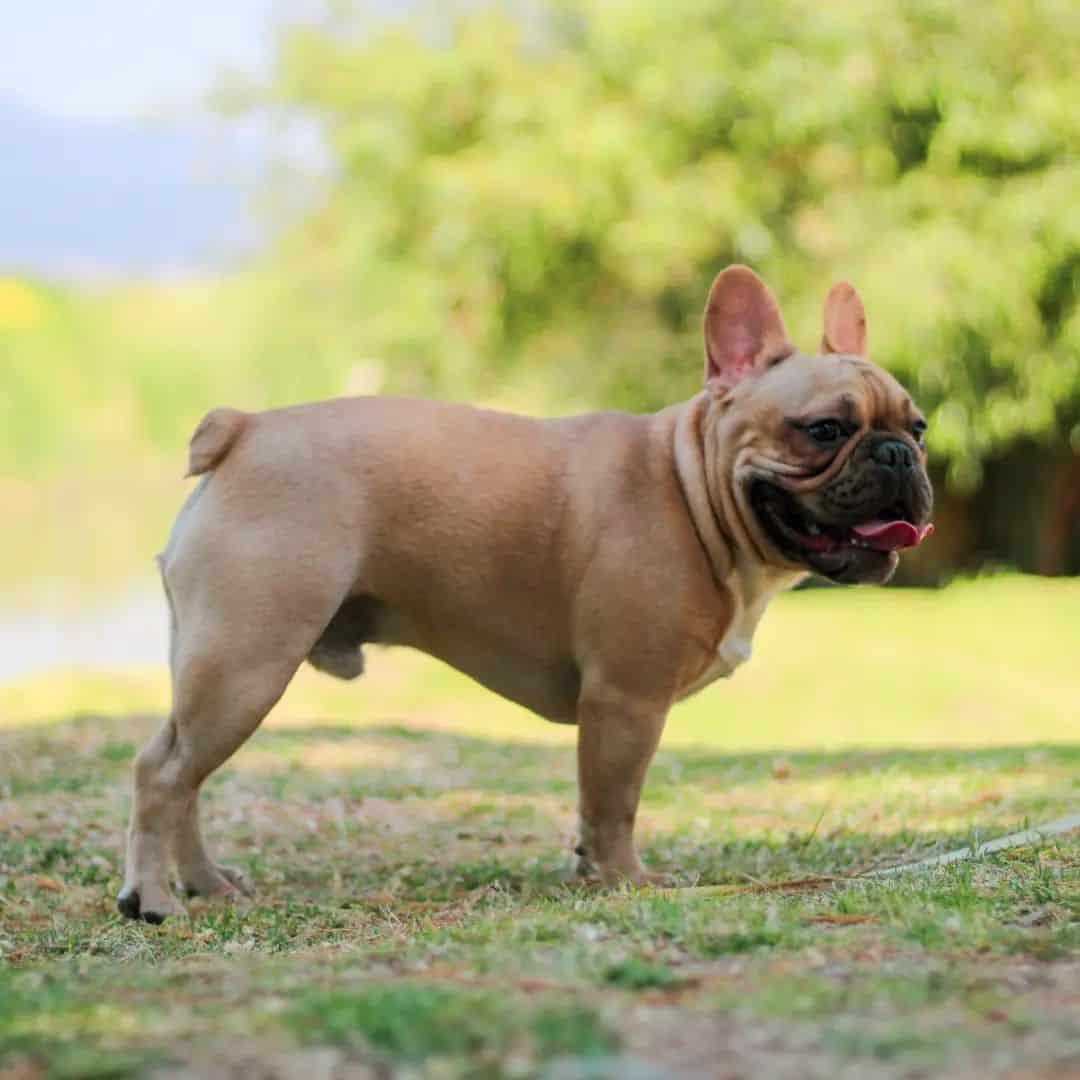
Some people believe that the dog’s coat color has a lot to do with its temperament. That’s why black dogs are classified as dangerous canines, and white ones are considered friendly.
However, that’s very far from the truth. The coat color has nothing to do with the dog’s temperament.
In the case of the fawn French Bulldog, the fawn coat color does not make the said Frenchie aggressive or kind. They have the same temperament as any other Frenchie.
So, what are Frenchies really like?
Are they friendly pooches or are they feisty like their toy companions… Chihuahuas?
Generally speaking, Frenchies are sweet and kind dogs. They enjoy the company of humans, which makes them ultimate companion dogs.
The fawn French Bulldog likes to be in the center of attention, but they’re not too egoistic. They’re deeply connected to their humans, and hate being left alone. If a Frenchie has to spend lots of hours alone at home, he might develop separation anxiety.
Separation anxiety is terrible for dogs because it can lead to destructive behavior and aggression.
Other than being a bit clingy, fawn Frenchies are calm and not temperamental at all. They’re not aggressive!
What will surprise you about this breed is their intelligence. Frenchies are ranked as #109 of the most intelligent dog breeds, which is still pretty awesome.
You shouldn’t experience any issues with training Frenchies. Here, you can find some pretty useful tricks on potty training a fawn Frenchie.
Once your Frenchie masters basic obedience lessons, you can move on to the fun part of the training, and teach your dog some entertaining tricks. Frenchies are clownish dogs, and they will bend over backwards to see you happy.
Where Can You Find Fawn French Bulldogs?
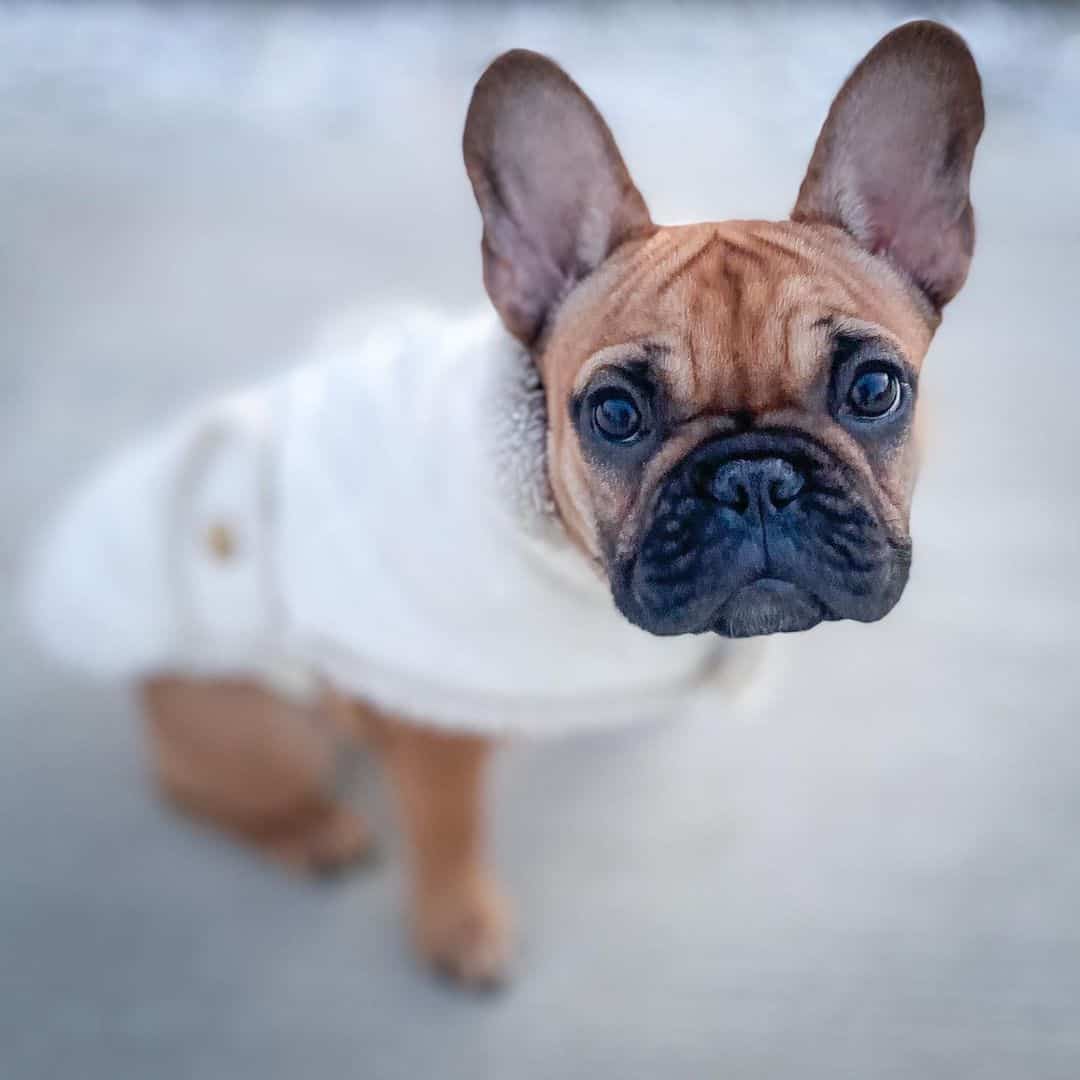
Since the fawn French Bulldog is a super rare coat color, you can’t expect to find them on every corner. Reputable breeders are hard to find. When it comes to rare colors like the fawn French Bulldog, you should always look for people who have experience in breeding top-quality dogs.
Achieving the fawn color, especially the blue fawn, can be tricky for inexperienced breeders. Also, some may even use that fact to scam you and sell you a poorly-bred Frenchie.
There are some ways to help you figure out which breeder is a good one and which not.
The first sign of a good breeder is his open breeding program. This doesn’t mean the breeder should tell you all his secrets. It simply means that the breeder should be open about which health tests he uses, whether the parent breeds healthy dogs, what kind of treatments puppies will receive before they get adopted, etc.
Another sign that you’re dealing with a good breeder is communication. It shouldn’t be a one-way street. A reliable breeder should be open to talk to you, and even invite you to see the puppies. Some breeders have virus-related visiting restrictions, but they still offer video calls and chats to prove to you that there’s nothing to hide.
Lastly, if your chosen breeder doesn’t mind answering lots of questions about his dog, and you answer lots of questions in return, he’s a keeper. Readiness to answer in detail is a sign that the breeder has knowledge about the breed, and wants to make sure his puppies are going to good homes.
If you’re ready, you should check out these French Bulldog breeders verified by PupVine, and see which one of them has fawn French Bulldog puppies:
French Bulldog breeders in California
French Bulldog breeders in Maine
French Bulldog breeders in Ohio
French Bulldog breeders in Texas
French Bulldog breeders in Illinois
French Bulldog breeders in North Carolina
French Bulldog breeders in Michigan
French Bulldog breeders in Georgia
Are Fawn French Bulldogs Expensive?
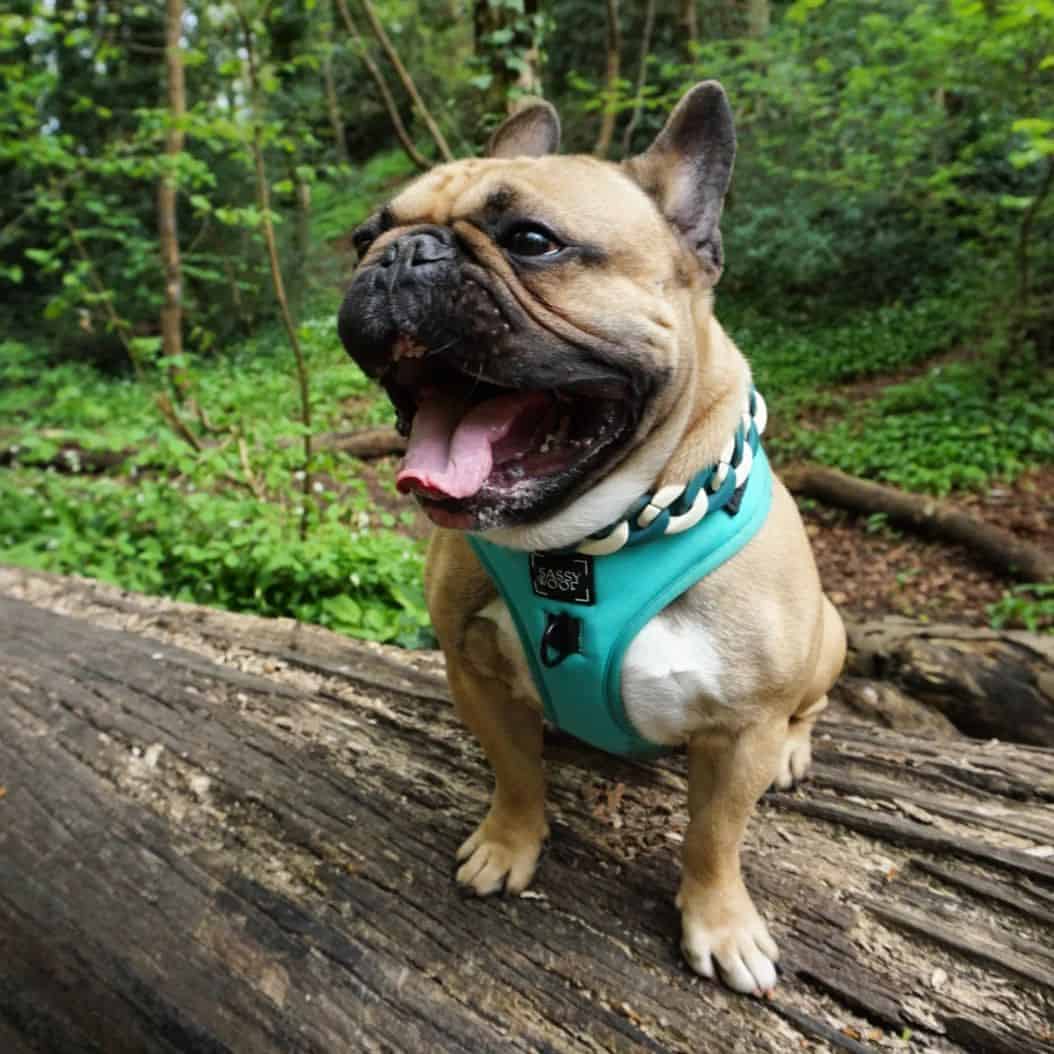
Well, it depends on what you consider expensive.
Of course, it’s always easier to adopt a Frenchie from a rescue center. The adoption process doesn’t cost a lot of money – usually around $100 or so, depending on the actual center. But, you’ll need to be lucky to find a fawn Frenchie available for adoption. You’re already familiar with the issues of finding the right Frenchie puppy.
A lot of dog owners aren’t patient enough to go through rescue centers and find their fawn Frenchie. They want to be sure when they’ll have their new buddy in their arms. Naturally, puppies coming from professional breeders cost a lot of money.
Simply put… purebred puppies will always be more expensive than hybrids or puppies coming from rescue centers.
When breeders shape the price of their puppies, there are several factors they take into consideration. The gender, the puppy’s pedigree, the location, and special markings are some of them, and so is the coat color.
Frankly, I find basing the price according to the coat color absolutely justified because achieving a specific color takes time, patience, and knowledge, yet still, you won’t be 100 percent sure if you’ll get the right color.
Frenchies come in lots of lovely colors, but only 8 of them are AKC recognized. Unfortunately, fawn is not one of them. However, this doesn’t stop the breeders or Frenchie lovers to price those puppies more than some other colors.
French Bulldogs aren’t too pricey. But, this only applies to standard coat colors.
Frenchies that carry a fawn, a fawn brindle, a fawn & white, or a fawn brindle & white coat are usually priced at $4,000 or more. They’re rare colors, and not many breeders carry them. Still, they’re not the most expensive ones.
If you want the luxury of owning a blue fawn French Bulldog, you’ll need to pay from $6,000 to an incredible $10,000 or more. The final price will depend on the dog’s pedigree.
The Pros And Cons Of Owning A Fawn French Bulldog
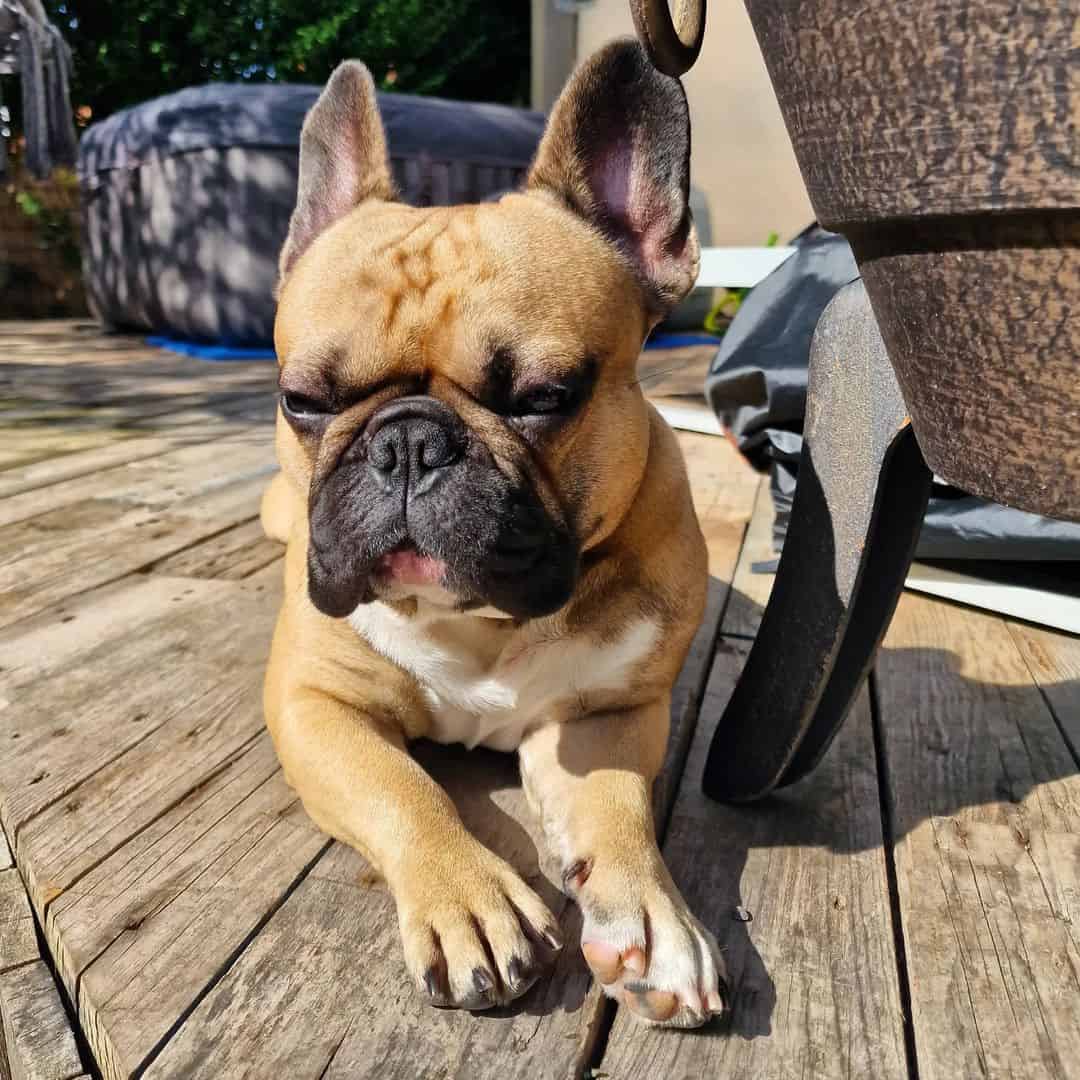
Since the fawn French Bulldog is an accepted coat color by official clubs, we can say there are lots of positive sides to owning a Frenchie, and only a handful of downsides.
The reason I’m introducing you to the good sides as well as the bad sides of this dog is to give you a good insight into what that dog is like. It’s always better to know what to expect from a pup than to be surprised with a downside that could be a dealbreaker for you.
As I said, there are lots of positive things about owning a fawn French Bulldog, and we’ll start with the top three best ones, and then move to something that could be a dealbreaker for some of you.
Good Looks
The fawn coat color comes in numerous shades, ranging from light fawn to deep, almost red shades.
As one of the most common Frenchie coat colors, fawn is an absolute beauty. These dogs look gorgeous, no matter which shade they feature.
Generally speaking, Frenchies are quite attractive and desirable. Many dog owners want them for their exceptionally good looks, and then they fall for their loveable temperament.
Personally, I had a chance to foster a fawn Frenchie girl, and she was simply stunning. A lot of people in the park asked me if she was a purebred Frenchie because they never saw such a lovely shade of fawn reflecting and playing with the natural light, like the golden color.
Fawn French Bulldogs also feature a dark mask around their face, which gives them a charming look.
Temperament – Coat Color Relation
Lucky for us, and for our Frenchie buddies, the fawn coat isn’t linked to any temperamental issues. Fawn French Bulldogs are purebred dogs, and as such, they shouldn’t exhibit unfamiliar behavior that’s not typical for French Bulldogs.
Rare and unrecognized colors are a result of crossbreeding, and crossbreeding brings along potential issues with a pup’s character. The reason behind this is because we don’t know which breeds took part in creating that specific coat color. Unknown breeds equal unknown behavioral patterns.
As simple as that.
Easy Grooming
French Bulldogs are dogs that shed, but their shedding isn’t uncontrollable. Sure, they don’t make a good fit for allergic people, but if you’re not allergic, then you shouldn’t experience any issues with grooming these dogs.
Frenchies only need light brushing a few times a week to keep their hair nice and smooth. Regular brushing also gives them a shiny coat, which is always very desirable.
Generally speaking, Frenchies are considered to be one of the best low-maintenance dogs in all terms.
Health Problems
Frenchies are fairly healthy dogs, but even they can experience some health problems. Unfortunately, all dogs do, so don’t expect your fawn Frenchie to be 100% healthy.
One major issue with the fawn coat color is alopecia – a condition known as blue dog coloration. Read about it here.
FAQs
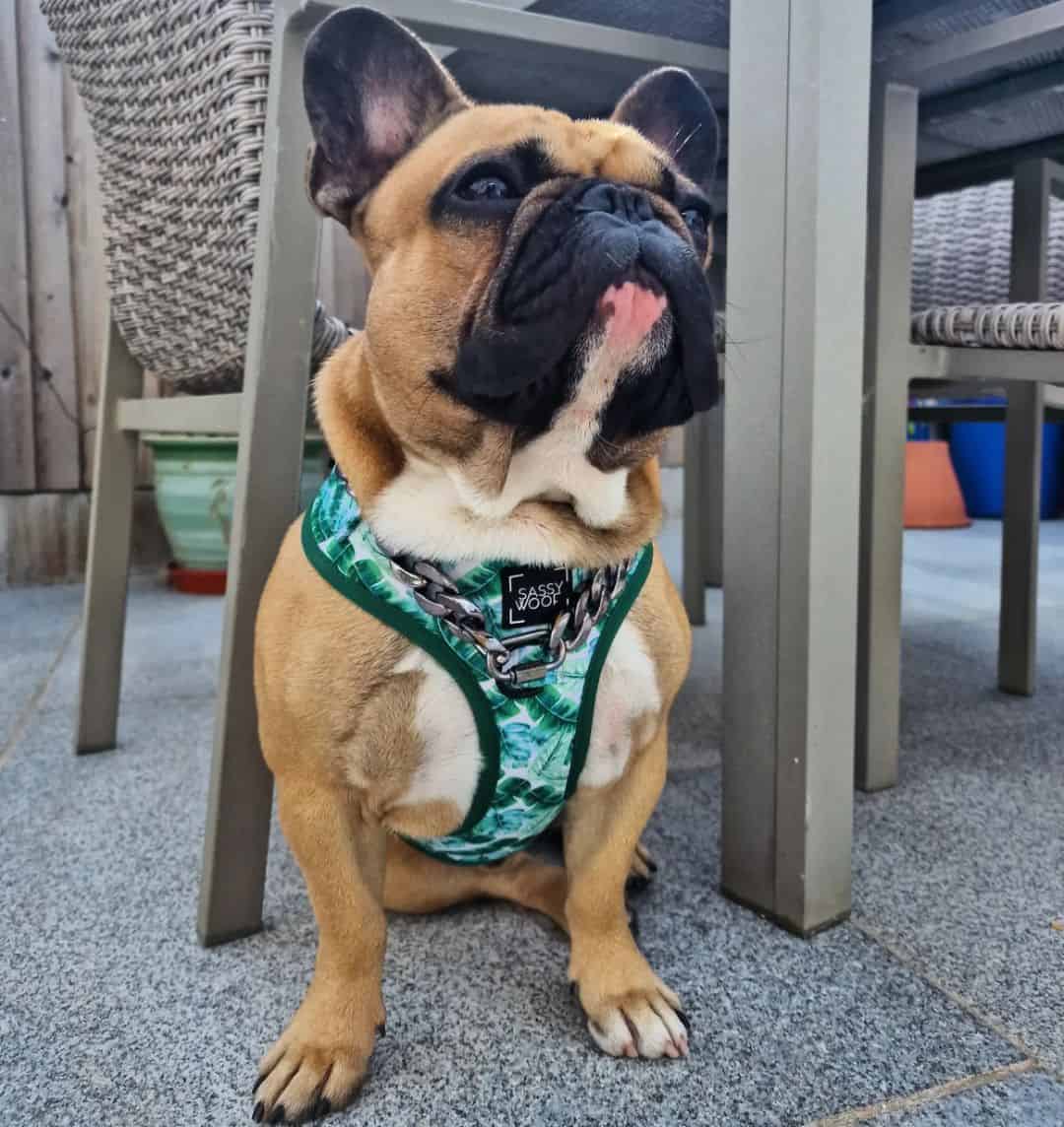
Are Fawn French Bulldogs Rare?
Breeders and dog experts usually classify non-standard colors as rare colors. Those colors aren’t recognized by the official canine clubs, and they never will be. In fact, dogs carrying rare colors are a serious fault in official dog competitions.
As for our fawn Frenchie, you can rest assured he’s not a rare doggo. These Frenchies are standard-colored dogs and not a fault.
Fawn Frenchies come in various shades of fawn, from light to dark ones. These dogs are quite popular, and you shouldn’t have any issues finding good fawn Frenchie puppies.
Do Fawn French Bulldogs Make Good Family Pets?
The coat color really has nothing to do with certain dogs being a good fit for families. There’s no link between a dog’s color and his temperament. All dogs of one breed share the same temperaments.
Some just exhibit special traits more than others.
Since French Bulldogs are super friendly dogs, I’d say they make great fits for families no matter if they’re fawn or any other color.
The good news for all future Frenchie owners is that fawn Frenchies aren’t considered unofficial Frenchie colors. These dogs are accepted by the AKC, meaning they’re not prone to major health problems or classified as a fault.
Having a healthy dog is super important. Once you bring a dog into your family, all your family members will get attached to it easily. Imagine explaining to your kids why their Fido left so soon?
Yes, that happens a lot with unofficial pups and those from questionable breeders.
Regarding their temperament, Frenchies are little clowns, always looking for an opportunity to make you laugh. These dogs are very human-centered, and they enjoy feeling loved. Of course, you must provide enough love in return; otherwise, your Frenchie will end up with a broken heart.
Final Thoughts
So, do you want to own a fawn French Bulldog after learning a thing or two about them?
Okay, that was definitely more than a thing or two. We could go on for days about Frenchies. These dogs are super sweet and extremely beautiful.
The most important thing you should know about these Frenchies is that fawn is acceptable, but not every shade of it. Watch out for potential illnesses, and make sure you buy from a responsible breeder so your pup stays at home more than at the vet’s office.
